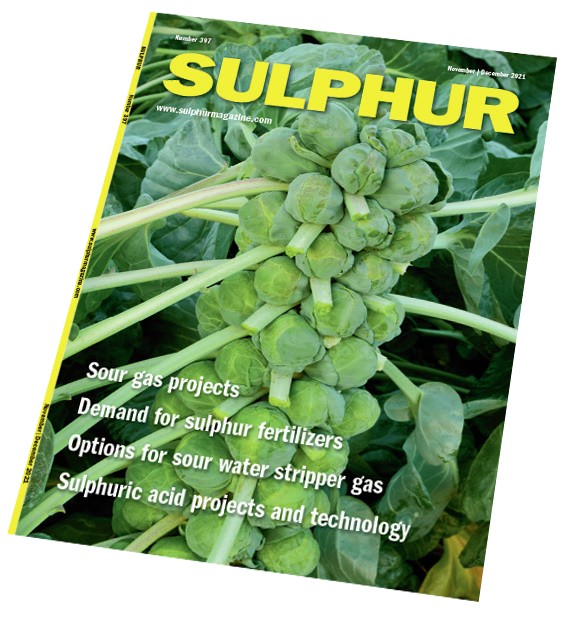Sulphur 397 Nov-Dec 2021

30 November 2021
Looking for the peak

The past year has seen an extraordinary run-up in sulphur and sulphuric acid prices, the former from a low of around $50-70/t f.o.b. in mid-2020 to more than $100/t higher than that at the end of Q1 2021. Prices then plateaued for much of this year, but they have begun moving inexorably upwards again in the past couple of months, drawn by rapidly rising phosphate prices, and Middle East sulphur rates recently breached price levels not seen since 2012.
“Phosphate prices like that can support high sulphur prices, but for how long?”
Sulphur depends very much upon the state of oil and gas markets for its supply, and fertilizer markets for its demand, and the former were very much impacted by the onset of the covid pandemic last year and its associated lockdowns. Part of the run-up in sulphur prices has been due to lingering supply tightness from refinery shutdowns, as well as the delay of some key supply projects, like Kuwait’s Clean Fuels Project. But rising energy prices have also been behind much of the rebound in sulphur prices over the past year, as vaccination programmes lead to an easing of covid restrictions around the world and a global surge in demand for fuels. Oil prices have headed back above $80/bbl, the highest level for eight years. And all of this has been exacerbated recently by the crunch in natural gas markets, especially in Europe and Asia.
But it is phosphate prices which have been behind much of the current pull upwards in sulphur markets. Phosphates were becalmed in 2020 like most other commodities, but the return of demand to the market has exposed relatively tight supply, with closures of Chinese domestic mono- and diammonium phosphate (MAP/DAP) due to environmental crackdowns contributing to rapidly rising prices. The natural gas price spike mentioned earlier has seen most European ammonia capacity shut down, and this, coupled with high coal prices in China has driven the ammonia content of MAP and DAP to some of the highest prices seen for years. This was coupled in mid-October with China’s decision to restrict exports of fertilizers to keep domestic consumers supplied, and has pushed DAP prices to record levels. In mid-October India’s government raised its subsidies on DAP to try and keep its phosphate industry supplying farmers, which has also allowed prices to continue to rise. Phosphoric acid prices c.fr India were quoted recently at $1,330/t – levels not seen since just before the financial crisis of 2008.
Phosphate prices like that can support high sulphur prices, but for how long? High gas and oil prices look to be with us for at least the rest of the northern hemisphere winter, but phosphate demand can be more sensitive to high prices. Still, Mosaic said at the start of November that 90% of its fourth quarter sales were already committed and priced, with some customers requesting commitments as far forward as 2Q 2022, and for the moment it expected upward pricing momentum to be continued. New sulphur capacity will probably make itself felt in 2022, but for the time being, it looks like we have not yet reached the peak of this particular sulphur rally.






